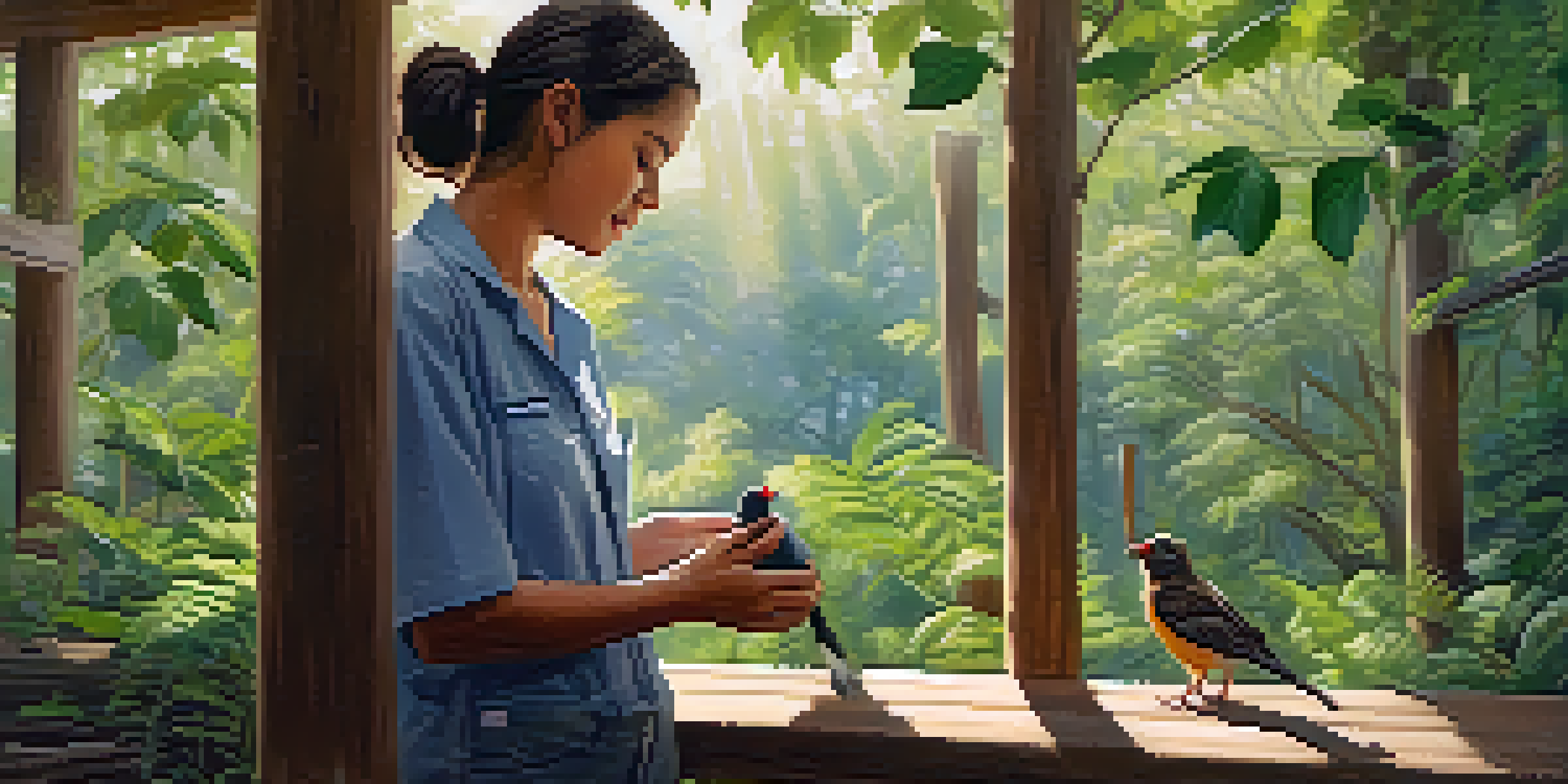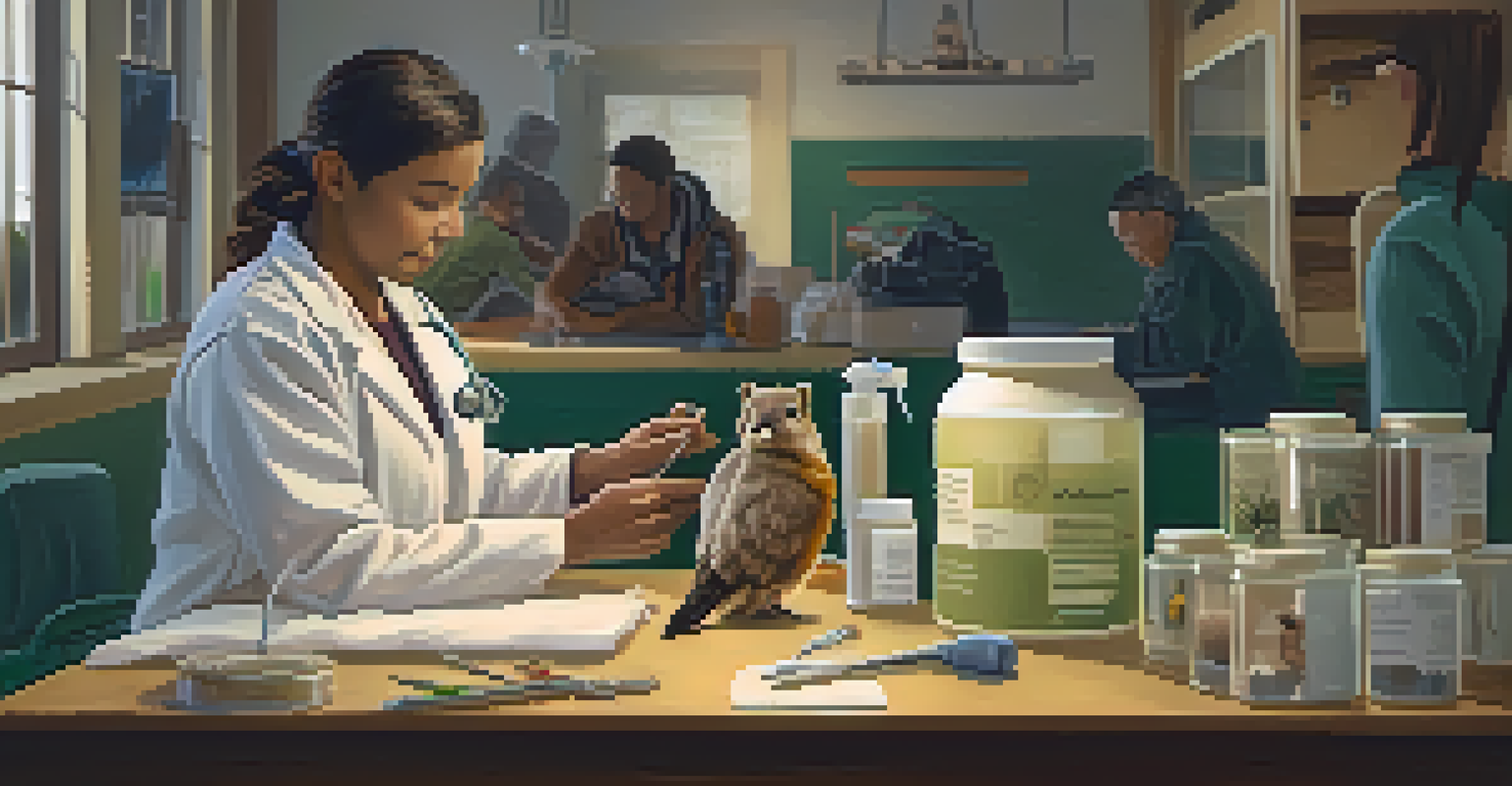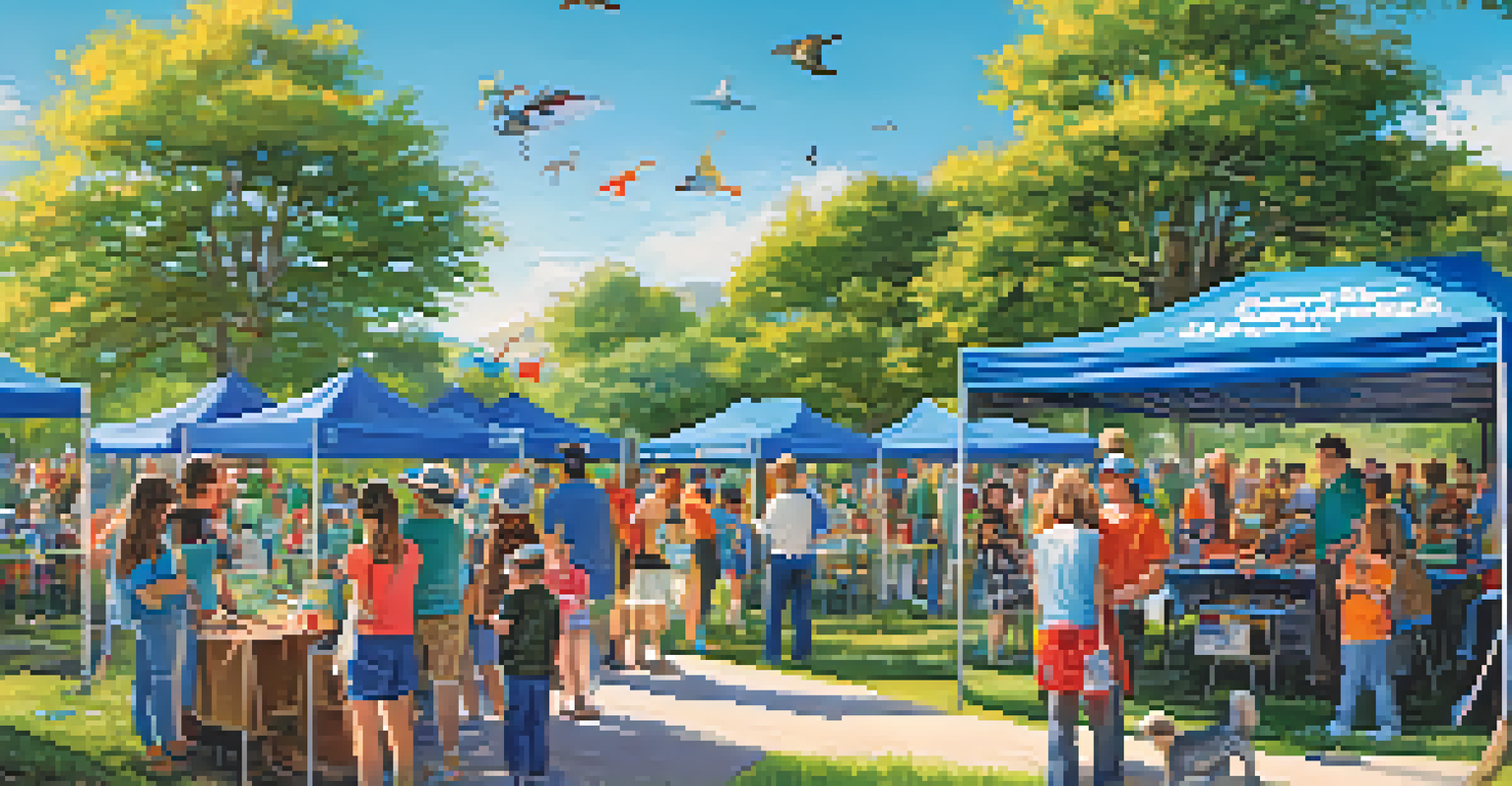How to Get Involved in Wildlife Rehabilitation Efforts

Understanding Wildlife Rehabilitation: What It Is
Wildlife rehabilitation involves caring for injured, orphaned, or sick wild animals until they can be returned to their natural habitat. It's a crucial effort that helps maintain biodiversity and supports ecosystem health. By providing medical care and support, rehabilitators play a vital role in ensuring these animals can thrive once again in the wild.
The greatness of a nation and its moral progress can be judged by the way its animals are treated.
Imagine nursing a baby bird back to health after it has fallen from its nest. This process not only helps the individual animal but also contributes to the larger community of wildlife. The goal is to release them back into the wild, where they can resume their natural behaviors and contribute to their species.
Understanding the commitment and responsibilities involved in this work is essential. Wildlife rehabilitators must follow strict guidelines to ensure the animals receive the best care possible while also minimizing human interaction to maintain their wild instincts.
Research Local Wildlife Rehabilitation Organizations
The first step to getting involved in wildlife rehabilitation is to research local organizations. Many areas have dedicated wildlife centers that offer various ways to volunteer, from hands-on care to administrative support. Websites and social media pages can provide insights into the mission and needs of these organizations.

Consider visiting or calling these centers to learn more about their specific programs. Some might require volunteers to undergo training or attend workshops to ensure they are well-prepared for the responsibilities ahead. This is a great opportunity to ask questions and see if their values align with your passion for wildlife.
Get Involved with Local Organizations
Research and connect with local wildlife rehabilitation centers to find volunteer opportunities that match your interests.
By connecting with local organizations, you can better understand the unique challenges and successes in your area. This knowledge will not only help you find your place in wildlife rehabilitation but also deepen your appreciation for the work being done.
Volunteer Opportunities in Wildlife Rehabilitation
Once you've found local organizations, explore the various volunteer opportunities they offer. You might be able to assist with animal care, help with facility maintenance, or engage in community outreach programs. Each role plays a crucial part in the overall success of wildlife rehabilitation efforts.
Wildlife conservation is not just about saving animals; it's about saving ourselves.
For instance, hands-on care may involve feeding animals or cleaning enclosures, while outreach might include educating the public about wildlife conservation. Every contribution, big or small, is valuable and helps raise awareness about the importance of protecting our wildlife.
Volunteering not only allows you to make a difference in the lives of animals but also helps you build connections with like-minded individuals who share your passion. These relationships can provide support and inspiration as you embark on your wildlife rehabilitation journey.
Consider Training and Certification Programs
For those serious about diving deeper into wildlife rehabilitation, pursuing training and certification programs can be incredibly beneficial. Many organizations offer courses that cover essential topics like animal care, species identification, and rehabilitation techniques. Completing these programs can enhance your skills and knowledge, making you a more effective volunteer.
Imagine learning how to properly assess an injured animal’s condition or understanding the nuances of different species' needs. This training not only boosts your confidence but also ensures that you can provide the best possible care for the animals you encounter.
Enhance Skills with Training
Pursuing training and certification programs can deepen your knowledge and effectiveness in wildlife rehabilitation.
Certification may also open up additional opportunities for involvement, such as specialized roles or internships. With a solid foundation of knowledge and skills, you'll be better equipped to contribute meaningfully to wildlife rehabilitation efforts.
Participate in Wildlife Conservation Events
Engaging in wildlife conservation events is another fantastic way to support rehabilitation efforts. These events can range from fundraising galas, educational seminars, to community clean-up days, all aiming to raise awareness and support for wildlife. Participating not only helps the organizations financially but also fosters a sense of community.
For instance, attending a local wildlife festival can connect you with other enthusiasts and conservationists. You'll gain insights into ongoing projects and learn about the challenges faced by wildlife in your area. This engagement can inspire you to take further action, whether through volunteering or advocacy.
By getting involved in these events, you're playing a part in a larger movement that prioritizes the health of our ecosystems. Every effort counts, and your participation helps amplify the message of conservation and rehabilitation.
Advocate for Wildlife and Their Habitats
Advocacy is a powerful tool in wildlife rehabilitation efforts, as it helps raise awareness and influence policy changes. You can advocate for wildlife by educating others about the importance of conservation, sharing information on social media, or even contacting local representatives about wildlife protection laws. Every voice matters in the fight to protect our natural world.
Consider hosting informational sessions or workshops in your community to share your passion for wildlife. By engaging others in discussions about the challenges faced by various species, you can inspire them to take action. Imagine rallying your friends and family to support local wildlife initiatives, creating a ripple effect of awareness and involvement.
Advocate for Wildlife Protection
Engaging in advocacy efforts helps raise awareness and influence policies that protect wildlife and their habitats.
Your advocacy efforts can significantly impact wildlife and their habitats. By raising awareness, you contribute to a culture of respect and care for the natural world, amplifying the work of those directly involved in rehabilitation.
Stay Informed and Keep Learning
Wildlife rehabilitation is an ever-evolving field, and staying informed about the latest research and best practices is crucial. Subscribe to newsletters from wildlife organizations, follow relevant social media channels, and read books or articles related to wildlife care. This ongoing education will enhance your understanding and effectiveness as a volunteer.
Consider joining online forums or local clubs focused on wildlife conservation. Engaging with others who share your interests can lead to new insights and experiences. You might discover innovative techniques for animal care or learn about emerging issues facing wildlife.

By committing to continuous learning, you not only improve your skills but also foster a deeper connection with wildlife. The more you know, the better equipped you are to make a meaningful impact in the rehabilitation field.